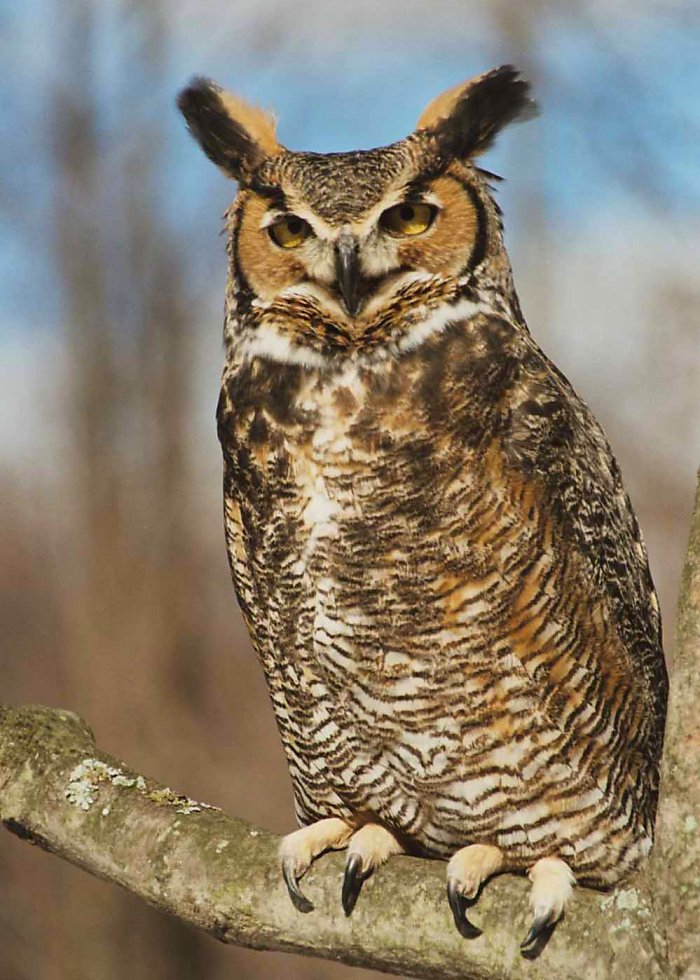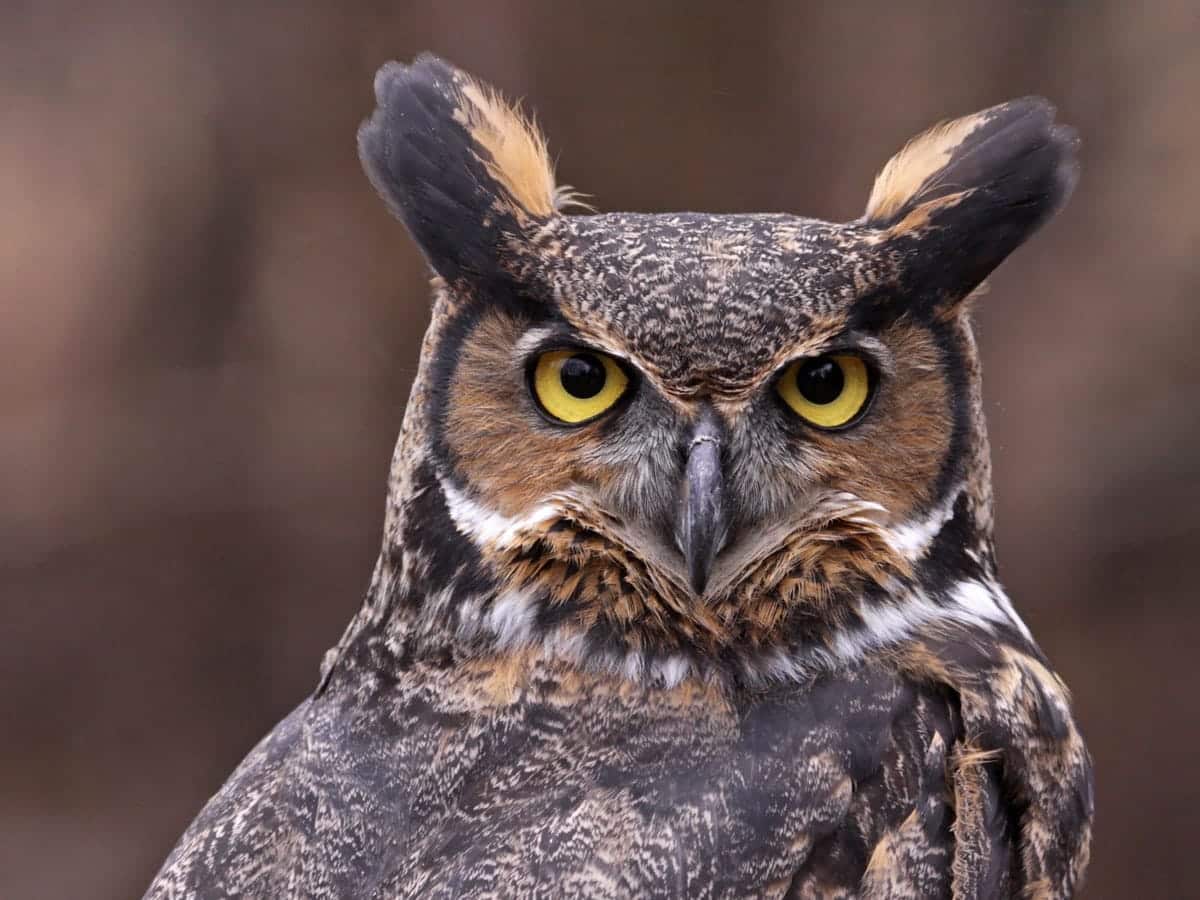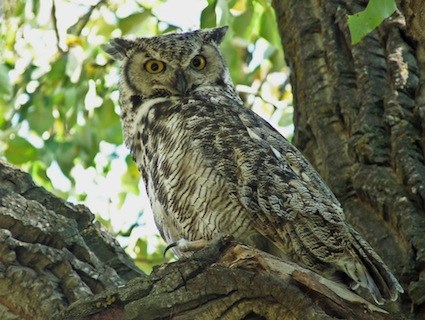Great Horned Owl
Great Horned Owl (Bubo virginianus)
The Great Horned Owl (Bubo virginianus ) is a species of bird in the genus of the Eagle Owl ( Bubo ), the family of the authentics owls ( Strigidae ) and to the order of owls ( Strigiformes ) belongs. He is closely associated with the Magellanic Horned Owl ( Bubo magellanicus ) is used, which has long been considered a subspecies of the Great Horned Owl.
Features
The Great Horned Owl is with a length of 46-63 centimeters wingspan 91-151 centimeters one of the largest species of owl in the Americas. The females are 10-20 % larger than the males. The weight of the Great Horned Owl is 900-1800 g The plumage color varies from gray to red- brown. On the bottom dark stripes running along its body and a white band across the chest. The belly is slightly lighter than the back. He has long ears or " horns ," explain its English name Great Horned Owl. As with all owls this spring ears, however, have no meaning for the sense of hearing. The large eyes are orange, yellowish. The feet are feathered to the claws.
The song of the male is a deep, far -sounding bu - bubu booh booh, which is repeated at intervals of several seconds Deten. The female sings similar but has a different rhythm and gets bu - bububu booh.
Habitat
The Great Horned Owl prefers open landscapes with trees or forest edges, but also forested mountainous regions up to 4,000 m altitude and even parks.
Diet and lifestyle
The Great Horned Owl feeds mainly on mammals, which can weigh up to three times its own body weight, including rats, mice, rabbits and skunks, but also of birds such as pigeons, ducks and other owls. The hunt takes it mostly in the gliding instead, the prey is beaten in a nosedive with tucked wings. Fish, amphibians and small alligators he hunts in part on the ground as possible, and even in the water.
Captive Great Horned Owls can be over 30 years old, wildlife rarely live more than 15 years.
Voice and Reproduction
During the mating season in January and February have males and females the typical reputation hu -hu -hu hu huuh hear. The voice of the male is lower than that of the female.
Like most owls build Horned Owls no nests, but like to use abandoned nests of birds of prey. Their eggs (two to four in a nest ) are hatched within 28-35 days, with only breeding females. The young leave after six to seven weeks climbing the nest after nine to ten weeks the young are fledged.
The sets of parents are often divided for many years the same territory, but are solitary outside the breeding season.
Dissemination
The Great Horned Owl is found in large parts of North America outside of the Arctic and in some regions of Central and South America. In southern South America, closely related to him Magellan Horned Owl lives.
Subspecies
We distinguish the following sub- types:
- B. v. virginianus
- B. v. lagophonus
- B. v. algistus
- B. v. saturatus
- B. v. pacificus
- B. v. elachistus
- B. v. Subarcticus
- B. v. wapacuthu
- B. v. occidentalis
- B. v. arcticus
- B. v. Heterocnemis
- B. v. scalariventris
- B. v. mayensis
- B. v. mesembrinus
- B. v. pallescens
- B. v. nigrescens
- B. v. colombianus
- B. v. nacurutu
- B. v. scotinus
- B. v. elutus
- B. v. icelus foer
- B. v. neochorus
- B. v. deserti










